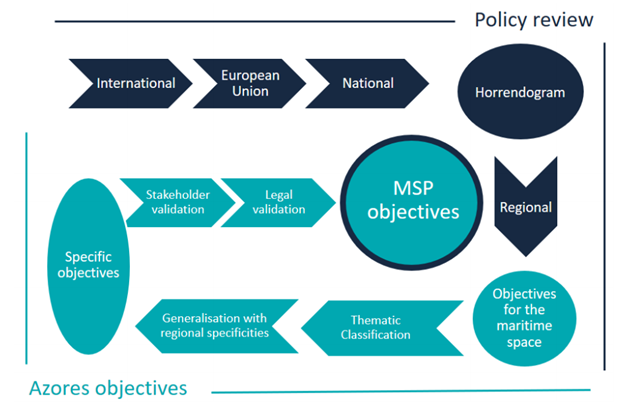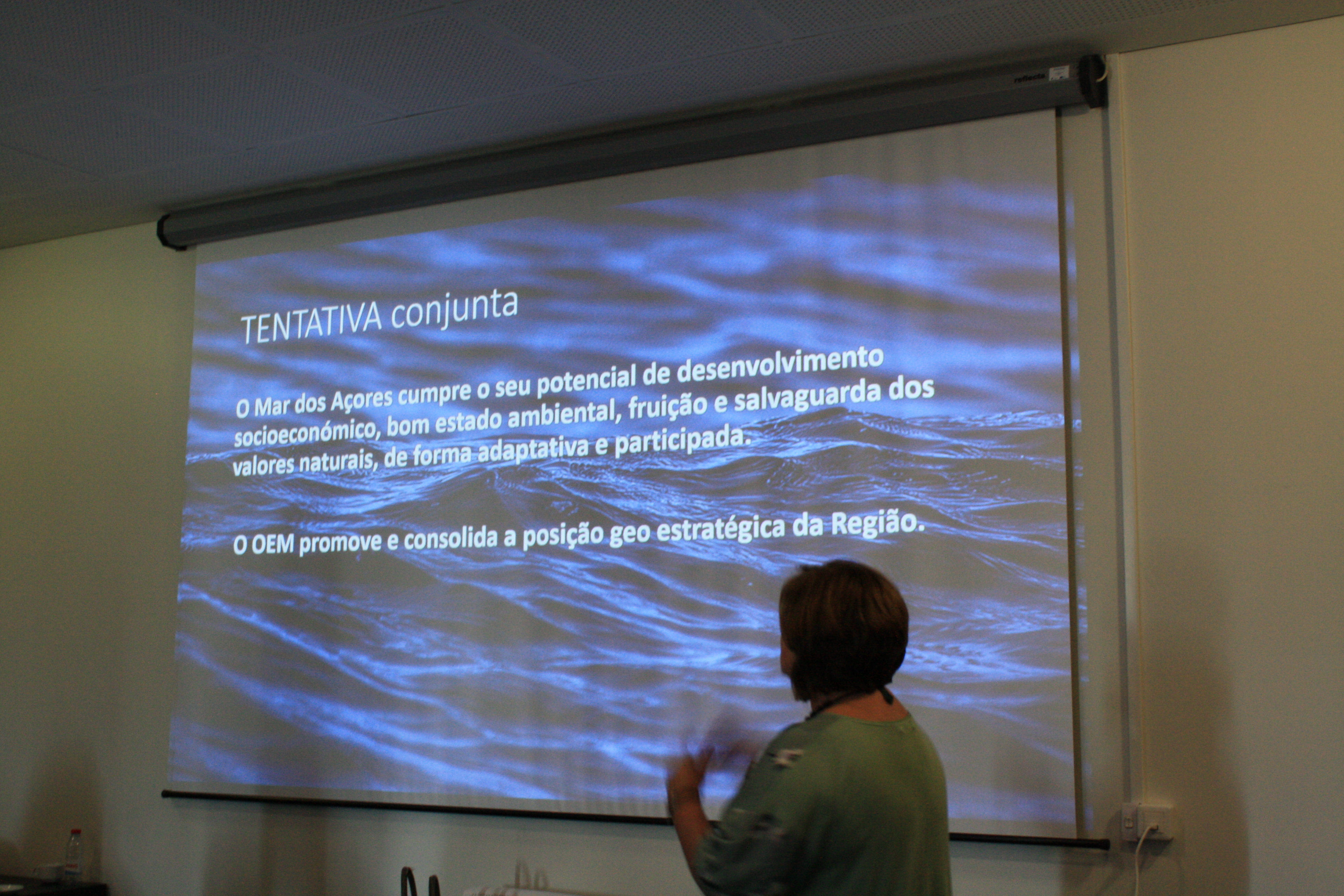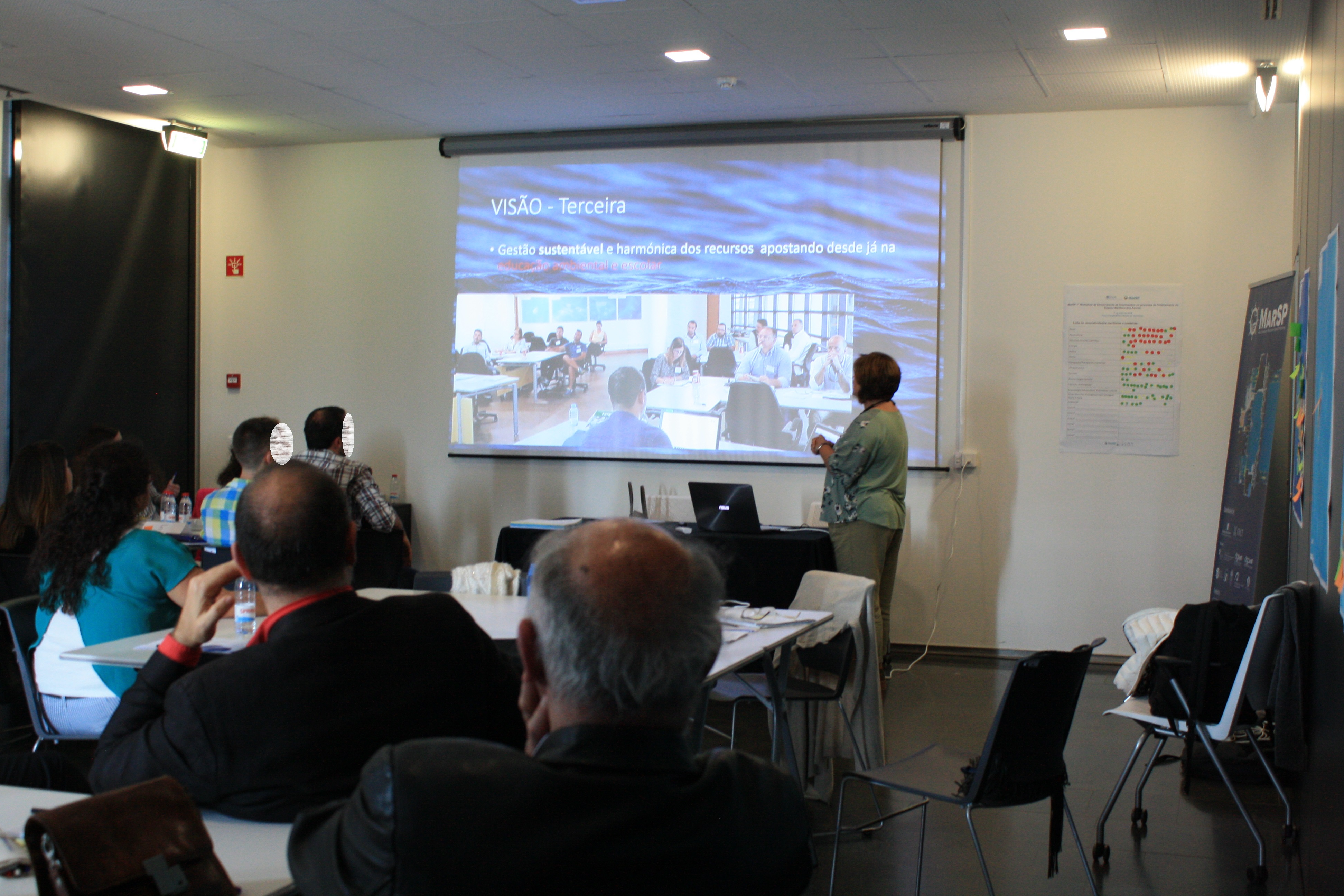BB2. Creating a vision and objectives for MSP
Regional reports on MSP objectives (report for the Azores in pages 25-96)
Mario Caña Varona
Creating a vision for MSP in the Azores during the 1st stakeholder workshop in São Miguel island.
Luz Paramio
Creating a vision for MSP in the Azores during the 1st stakeholder workshop in São Miguel island
Luz Paramio
Setting a vision and objectives is a fundamental initial step in all maritime spatial plans. Under the MarSP project, a methodology was created to develop MSP objectives. This methodology linked MSP objectives to established policy commitments of these archipelagos at the international, EU, national and regional levels. It was adopted in the Azores following these phases:
- Policy review: review of marine policy to determine the objectives targeting the maritime space. The Portuguese policy horrendogram helped in the selection of policies.
- Thematic classification of the objectives by themes and subthemes.
- Generalisation of objectives by subthemes to obtain specific objectives.
- Discussion, prioritisation and validation of specific objectives by stakeholders.
- Legal validation and cross-check with MSP policy documents to finalise the MSP objectives.
During the first MSP stakeholder workshop in the Azores, stakeholders were asked to discuss and validate the specific objectives. This was also the case for the proposal of a regional MSP vision, also discussed and validated in the stakeholder workshop.
- The validation of objectives by stakeholders was included in the methodology since its inception to ensure the participatory approach and social acceptance.
- Methodologies need to be properly communicated to ensure the understanding of scientific methods by stakeholders. A brief communication on the methodology was given prior to the stakeholder participation.
- The discussion of objectives allowed the inclusion of stakeholders’ inputs.
- Activities with stakeholders need guidance to facilitate a smooth discussion and acceptable results.
- The review of various marine policies at different geographical levels result in multiple objectives for the maritime space. This may make the task of reaching MSP objectives difficult.
- The review of all policy commitments is very comprehensive and requires prioritisation of the most significant policies. The most significant policies at each geographical scale were selected.
- After the stakeholders’ inputs and validation, there was a final phase to cross check the resulting objectives with the MSP policy. This allowed both the legal validation of inputs given by stakeholders and also ensuring their compliance with the legal obligations given by MSP policy.
- Certain objectives go beyond the legal scope of MSP (e.g. some sectorial objectives). Despite not being included in the list of MSP objectives, they were considered in the frame of this policy.
- Obtaining SMART (Specific, Measurable, Achievable, Realistic, Time-bound) objectives requires firm commitment in setting the time frame for the objectives.



